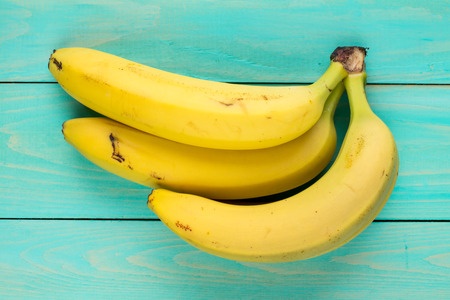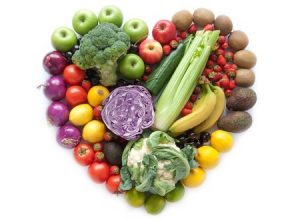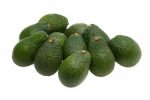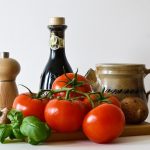
Bananas are one of the top snack foods and their curved, boomerang shape with that bright yellow colour provides lots of appeal. No wonder we go bananas for them simply because they offer so much in terms of top nutrition.
It’s also a very versatile fruit. What can you not do with them ? Great on pancakes and sandwiches, turn into bread or cake, dip them into chocolate sauce, add them to ice-cream and make a great smoothie or milkshake. They are extremely portable and because they are so easy to carry everywhere, make for a super snack.
In commercial terms, the United Nations reckons growers exported 18 million tonnes of bananas in 2015. Over 50 per cent of these went to the USA and the European marketplace. In the United States, each person eats 11.4 lbs. of bananas per year, based on U.S. Department of Agriculture statistics. For the US population, this makes it their favourite fruit if indeed we should technically call it that !
The Nutritional Value Of Bananas
One serving of banana is considered to be about 126 grams. A small, ripe banana contains 112 calories, 26-30 grams of carbohydrate and 0.85 gram of protein according to the U.S. Department of Agriculture.
Bananas are naturally very low in fat (about 0.3g), cholesterol, and sodium. The minerals to note are the potassium levels, magnesium and phosphorous, and the vitamins, vitamion A, folate and vitamin C.
Bananas provide a variety of vitamins and minerals (mg; milligrams, mcg micrograms):
| Nutrient | Amount in one medium banana | Daily adult requirement |
| Energy (calories) | 105 | 1,800–3,000 |
| Carbohydrate in grams (g) | 27, including 14.4 g of sugar | 130 |
| Fiber (g) in the form of pectin | 3.1 | 25.2–33.6 |
| Protein (g) | 1.0-1.3 | 46–56 |
| Magnesium (mg) | 31.9-34.0 | 320–420 |
| Phosphorus (mg) | 26 | 700 |
| Potassium (mg) | 422 – 450 | 4,700 |
| Selenium in micrograms (mcg) | 1.9 | 55 |
| Choline (mg) | 11.6 | 425–550 |
| Vitamin C (mg) | 9 – 10.3 | 75–90 |
| Folate (mcg DFE) | 23.6-25.0 | 400 |
| Beta carotene (mcg) | 30.7 | No data |
| Alpha carotene (mcg) | 29.5 | No data |
Other key nutrients include the following:
- Vitamin B6 – 0.5 mg
- Manganese – 0.3 mg
- Riboflavin – 0.1 mg
- Niacin – 0.8 mg
- Vitamin A – 81 IU
- Iron – 0.3 mg
Bananas are consumed by many in diets as a way to reduce the risk of developing type-2 diabetes, to help with weight loss, improve the action of the nervous system, produce white blood cells etc. many of these benefits can be attributed to the type of sugars a banana contains and its vitamin content, especially B6.
Bananas also have a high antioxidant content which is regarded by nutritionists as key to mopping up free radicals which damage cell membranes and increase our general level of oxidative stress. Vitamin C is needed for healthy skin, teeth and gums. It protects the skin from oxidative stress, supports collagen production and helps the skin keep hydrated.
Bananas might be on a par with blueberries and blackcurrants when it comes to providing these sorts of health benefits.
One of the most interesting benefits comes from where the banana sits in terms of the glycemic index.
Banana Puree
The nutritional profile for banana purée (made from ripe Cavendish bananas, with no added sugar or water), based on 100 grams of product. Values are averages drawn from the USDA FoodData Central and EFSA nutrient databases.
Nutritional Profile of Banana Purée (per 100 g)
| Nutrient | Amount | Unit | Notes / Significance |
|---|---|---|---|
| Energy | 89 | kcal | Moderate energy density; mainly from natural sugars and starch. |
| Water | 74.9 | g | High moisture content gives soft texture. |
| Protein | 1.1 | g | Low protein, primarily structural plant proteins. |
| Total Fat | 0.3 | g | Negligible; mainly unsaturated fatty acids. |
| Carbohydrates (total) | 22.8 | g | Major component, mostly sugars and starch. |
| – Sugars (total) | 12.2 | g | Natural sugars (mainly sucrose, fructose, glucose). |
| – Dietary Fibre | 2.6 | g | Mostly soluble (pectin), aids digestion. |
| Ash (minerals) | 0.8 | g | Includes potassium, magnesium, and small trace elements. |
| Potassium (K) | 358 | mg | High level; contributes to blood pressure regulation. |
| Magnesium (Mg) | 27 | mg | Supports enzyme and muscle function. |
| Phosphorus (P) | 22 | mg | Important for energy metabolism (ATP). |
| Calcium (Ca) | 5 | mg | Minor contribution to calcium intake. |
| Iron (Fe) | 0.26 | mg | Trace amount; not a major source. |
| Vitamin C (ascorbic acid) | 8.7 | mg | Antioxidant; moderate level, partly reduced by processing. |
| Vitamin B6 (pyridoxine) | 0.37 | mg | High for a fruit; aids amino acid metabolism. |
| Folate (B9) | 20 | µg | Important for DNA synthesis. |
| Vitamin A (RAE) | 3 | µg | Trace; from provitamin A carotenoids. |
| Niacin (B3) | 0.67 | mg | Supports energy metabolism. |
| Thiamin (B1) | 0.031 | mg | Small contribution. |
| Riboflavin (B2) | 0.073 | mg | Trace amount. |
| Pantothenic acid (B5) | 0.334 | mg | Involved in coenzyme A synthesis. |
| Sodium (Na) | 1 | mg | Very low; beneficial for low-sodium diets. |
Glycaemic and Sensory Properties
-
Glycaemic Index (GI): Moderate (~50–55 depending on ripeness).
-
pH: 4.5–5.2, slightly acidic, which helps microbial stability.
-
Texture: Smooth, viscous, due to natural pectin and soluble fibre.
-
Flavour Profile: Sweet with mild acidity; aroma compounds include isoamyl acetate and eugenol derivatives.
Processing Considerations
-
Banana purée is typically produced by peeling, pulping, and pasteurising ripe bananas.
-
Heat processing can slightly reduce vitamin C and some volatile aroma compounds but enhances microbial safety and shelf life.
-
No preservatives are needed if pasteurised and aseptically packed.
-
Can be used in infant foods, bakery products, smoothies, and dairy formulations for natural sweetness and viscosity.
Summary Insight
Banana purée is a nutrient-rich, naturally sweet fruit ingredient with:
-
High potassium, vitamin B6, and dietary fibre content.
-
Low fat and sodium levels.
-
Moderate sugar content, which increases with fruit ripeness.
-
Useful as a natural sweetener and texture enhancer in foods, particularly in infant nutrition and plant-based products.
Potassium Content Of Bananas
Potassium has always been regarded as one of the key minerals to be found in bananas and makes for a great natural dietary source.
The potassium content of a ripe banana is 450mg/100g which means it is rich in this important mineral.

The recommended intake of potassium for adults is 4.7 grams per day. A large banana gives you nearly 10 to 15 per cent of your recommended daily intake!
Potassium is needed for maintaining the fluid levels in the body. It is also part of the system required for regulating nutrient movement into and out of cells as well as waste products.
Potassium is needed for nerve conduction and muscle contraction. It is also part of the system that keeps the heart beating regularly and works with sodium to maintain the correct blood pressure.
The formation of kidney stones is reduced if potassium levels are kept up, especially as people age. In turn, healthy kidneys regulate the amount of potassium circulating in the body for all these important functions.
Not everyone likes bananas so other sources can be purchase online. Find out more about potassium here.
Weight Loss Benefits Bananas
Bananas are a food for all of us trying to lose weight. Even if they have a good portion of carbs and sugar they are still recommended by dieticians. Not only are they power-packed with vitamins and minerals, they also have the right sugars needed for helping us feel full.
Bananas rank quite low on the glycaemic index because they release their carbohydrates which is a measure of their energy content, into the bloodstream slowly. The sugar content of 100g of banana pulp is 19 grams. Fully ripe bananas have a glycemic index of 51 according to the International GI Database.
If you incorporate bananas into your diet then you have key food for helping you maintain your goals.
Digestion
Bananas are especially high in resistant starch. This is a form of dietary fibre which is ideal for those of us looking to manage digestive and other gut issues, reduce weight, and promote the growth of healthy bacteria. It is also a contributor to the low GI value of bananas as resistant starch in itself helps to prevent spiking of blood glucose levels. This type of starch also promotes production of short chain fatty acids in the gut by bacteria (Lockyer and Nugent, 2017).
The best time to eat bananas is in the morning. Generally speaking nutritionists recommend loading up with the calories in the morning when we are more effective at burning them off. However, a banana can be eaten at any time and it’s not worth worrying about absolute timings.

Do You Go For Green or Ripe Bananas ? Which Is Better For You ?
A green banana is generally unripe and contains plenty of starch. In this state it also has a very low glycemic index (GI). As it ripens, the sugar content increases and it becomes sweeter. There is a also a corresponding rise in its glycemic index (GI).
If you compare a ripe banana with other fruit, it still has a low GI value. It isn’t necessary to focus on just the green bananas for weight loss because it’s all about your goals in losing weight. Ripe, yellow bananas are great for the rapid energy boost. A green banana has plenty of resistant starch which as we know satisfies our hunger pangs for longer. This might be a better choice for maintaining long-term weight loss.
What If You Eat Too Many Bananas ?
Dieticians and nutritionists are not too worried about eating too many bananas if you are well. If you have impaired kidney function then it might be an issue in excreting potassium in the urine.
When it comes to weight loss, the best option is to have variety and always choose foods in moderation. Bananas are not the be all and end all of a diet. The recommendation from nutritional sites is to restrict banana intake to between 2 or 3 per day. Have them in the morning such as breakfast or lunch and make sure you have plenty of vegetables and other fruit to complement your diet.

Heart Health
Bananas are recommended for those with heart health issues. The relatively high potassium content coupled with the low sodium content in a banana means that these important electrolytes can be balanced a bit better. Maintaining the sodium-potassium balance is very important. The implications are that we can manage our nervous system, keep our blood pressure levels under control, minimise the risk of hypertension and indeed keep our hearts beating!
The Bottom Line!
Bananas, whatever their state of ripeness are a great diet-friendly food. Make them part of your diet or weight-loss programme!
References
Lockyer, S. and Nugent, A. P. (2017), Health effects of resistant starch. Nutr. Bull., 42 pp. 10–41. doi:10.1111/nbu.12244



I always knew bananas were just brilliant.